Speaker
Description
Abstract
The global energy crisis and environmental concerns have intensified the search for sustainable and renewable energy sources. Among various strategies, solar-assisted water splitting has emerged as a promising approach for producing clean hydrogen fuel. However, the efficiency of this process is largely dependent on the development of advanced materials that can effectively absorb sunlight, generate charge carriers, and minimize recombination losses. One-dimensional semiconductor nanowires and two-dimensional conductive materials offer a unique combination of properties that can significantly enhance charge transport and interfacial charge separation 1.
In this study, we investigate the synergistic effects of zinc oxide (ZnO) nanowires and layered Ti3C2 (MXene) as hybrid photoelectrodes for solar-driven hydrogen production. ZnO, known for its wide bandgap (3.37 eV) and excellent stability in aqueous environments, suffers from rapid charge carrier recombination, limiting its efficiency in photocatalysis. To overcome this challenge, the integration of ZnO with MXene an emerging class of two-dimensional transition metal carbides offers a promising strategy due to its high electrical conductivity, excellent charge transport properties, and tunable surface chemistry23. The optimized ZnO/MXene exhibited the highest solar-to-hydrogen (STH) efficiency compared to pure ZnO, highlighting the critical role of interfacial engineering in maximizing solar energy conversion. By leveraging the combined advantages of semiconductor nanowires and highly conductive nanosheets, this work provides valuable insights into the design of next-generation photoelectrodes for scalable and efficient hydrogen production.
Keywords: MXene; photoelectrochemical water splitting; composite photoelectrode; photocatalysis; charge separation
Acknowledgements: The authors acknowledge the financial support provided by the National Science Centre of
Poland (SONATA BIS project 2020/38/E/ST5/00176). This work was also supported by the HORIZON-TMA-MSCA-SE project (A-21563-ZR-N-109 - ESCULAPE 101131147).
References:
1. Y. Zhuang, Y. Liu and X. Meng, Appl. Surf. Sci., 2019, 496, 143647.
2. A. Sreedhar and J. S. Noh, J. Electroanal. Chem., 2021, 883, 115044.
3. W. Yang, D. Shen, Y. Duan, H. Li, J. Li and Y. Li, ACS Appl. Energy Mater., 2024, 7, 4412–4420.

